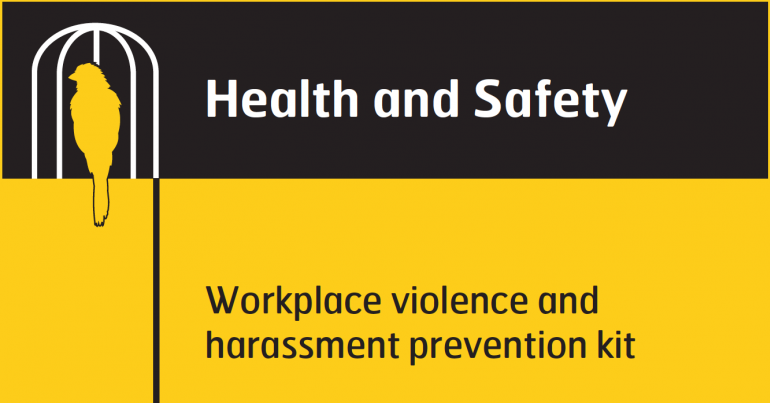12 things you can do to fight violence in the workplace
Download a printable version of these tips.
1. Raise the profile of the issue
Post CUPE’s “It’s not part of the job” poster on union notice boards. We also have stickers and buttons you can order.
2. Empower your members
Make sure they know their rights and understand the importance of reporting incidents – no matter how small. Remind them their union will be there for them.
- Download the Your four rights poster
- Order the Your four rights poster
- Download the response to violence checklist
3. Put it on the agenda
The employer has a responsibility to ensure a workplace free of violence. It’s our job to make sure they fulfill that obligation. Put the issue as a standing item on the agenda of health and safety committee meetings. If you don’t have a committee, establish one. If that isn’t enough, put it on the agenda for labour-management meetings, too.
4. Empower your health and safety committee
CUPE representatives on your joint health & safety committees have a big role to play in identifying workplace hazards that increase the risk of violence. Make sure they have the tools they need.
5. Provide training to your activists
Your health and safety committee can’t tackle this on their own. Make sure your local executive, stewards and other activists have the skills they need to help address concerns in the workplace.
6. Survey your members
The worst incidents of workplace violence are easy to spot, but your members can also be subject to incidents of smaller aggressions, harassment and violence that can go unreported. CUPE has tools to help you find out where and how your members are experiencing violence at work.
7. Conduct a workplace inspection
Noticed a spike of violent incidents? Your committee should conduct an inspection. We have a tool for that.
8. Review the employer’s policies
Employers develop policies to address a lot of workplace matters. If yours has a policy on violence prevention, make sure it works for your members. CUPE has a guide that will help.
9. Put it on the bargaining table
Review your collective agreement and make sure you have the best possible language to address workplace harassment, violence and related issues like staffing levels and working alone.
- Download Collective Bargaining Strategies to Prevent Workplace Violence
- Download Stop Harassment: A Guide For Cupe Locals
- Download the Working Alone fact sheet
10. Partner with your employer
Once your employer understands the seriousness of the issue, you might be able to work together. Consider partnering on training, communications to employees, and communications to the public (for example, using prominent signage) that lets people know that aggressive and violent behaviour will not be tolerated.
11. Lead by example
Conduct union business, including meetings, with respect and solidarity. CUPE’s Equality Statement and Code of Conduct can help.
12. Campaign with community allies
Pressure governments to increase funding and restore public services. Staff shortages increase the risk of workplace violence.





